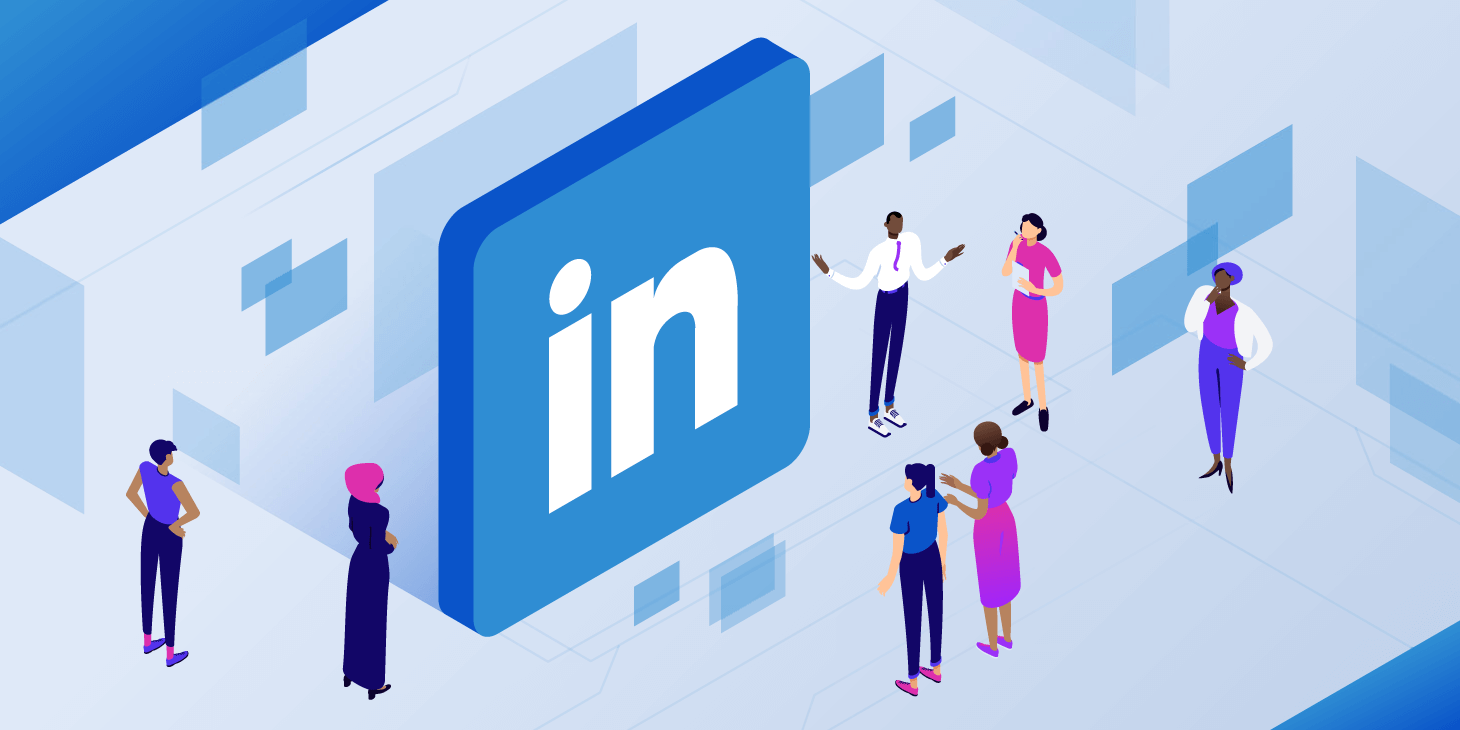Why Use LinkedIn for Content Marketing?
LinkedIn is a professional platform that differs from other social media offerings such as Facebook and Twitter.
While those platforms can be beneficial to your marketing strategies, LinkedIn offers unique opportunities not found anywhere else.
Whether you are an individual, B2B, or B2C business, using LinkedIn for content marketing is beneficial for many reasons. Some of these include the following.
Exposure to LinkedIn’s Massive User Base
With access to LinkedIn’s user base of over 600 million, with approximately 250 million of those users active every month, you have the potential for exposure to a wider audience and the ability to generate more high-quality leads directly from your content.
Access to Decision-Makers
Since LinkedIn is a professional platform, large portions of the user base are decision drivers; those individuals tasked with making decisions for companies, corporations, and brands. As such, you have a higher possibility of gaining access to them.
Expansion of Your Reach
Publishing or sharing content on LinkedIn expands your reach, allowing you to connect with current customers or potential customers, as well as with their networks.
Also, if using hashtags in your content, you can reach others who have an interest in what you offer, helping them find you more easily.
Increased Networking Opportunities
The structure of LinkedIn consists of connections and followers, increasing your networking capacity. You’ll be able to cultivate relationships with your followers and continue to do so with your connections.
When you post relevant and engaging content that directly speaks to your target audience, you increase your chances of sharing what you know with those not currently in your network also, enticing them to follow or connect more readily.

Potential to Drive More Traffic to Your Website
Traffic, especially to B2B websites, increases due to LinkedIn, so sharing content can cause users to navigate to your website to learn more about you and what you offer.
Provides a Way to Become a Thought Leader
Sharing content on LinkedIn provides an avenue for presenting and establishing yourself as a thought leader, building trust and authority along the way.
How to Build a LinkedIn Content Marketing Strategy
To build a specific LinkedIn content marketing strategy, start with the following five steps.
1. Set Specific Objectives
Before jumping in, spend time brainstorming and setting specific objectives for your LinkedIn content marketing.
You don’t need to create too many, just enough to show what means the most to you or your organization and makes sense for reaching your marketing goals.
Is your main focus on increasing brand awareness, building trust and authority, gaining more high-quality leads, or boosting conversions by promoting your brand, services, or products?
Once you answer questions such as these, you can begin to develop a content strategy to help meet your chosen objectives.
2. Define Your Buyer Persona
Before posting anything on the social platform, first consider what audience or buyer persona your content will be for, then tailor all messaging for that specific group.
For instance, if your persona is financial professionals, you’ll want to select topics of interest to them specifically.
Another factor to also consider when it comes to your buyer persona is whether it consists of decision-makers or those in lower to mid-level positions who are often tasked with finding solutions to report to higher-ups.
By being as specific as possible when identifying your personas, you will be able to develop a targeted content strategy that gets results.
3. Identify the Best Content Types
Today you have various types of content you can share.
Yet, you shouldn’t just assume that any of these will attract the attention of your target audience, especially when it comes to posting on LinkedIn.
The platform allows you to publish or share short updates, videos, documents, blog posts, interactive content, events, and even live sessions.
Determine which of these speaks to your audience and focus on them in your content strategy.
4. Stay Away from Salesy Language
While underneath your marketing strategy is the desire to promote your brand, products, or services in the best possible way, that doesn’t mean you need to use salesy language and tactics when creating your content.
Consumers today dislike salesy content and prefer authenticity and genuineness from the brands they buy from.
For this reason, stick with utilizing inbound marketing techniques with the focus on informing, educating, inspiring, and engaging with consumers.
5. Include Hashtags
You may have the best content in the world, but if your target audience can’t find it, what good is it to your business or brand?
To change this, include hashtags in all your content.
The purpose of LinkedIn hashtags is to categorize all content and help you reach your target audience as well as those who share similar interests.
Ways to Distribute Content on LinkedIn
LinkedIn offers users a variety of beneficial ways to distribute content. Determine which of these will benefit your LinkedIn Content Marketing strategy the most.
Create Individual Posts/Status Updates
One of the quickest ways to share content on LinkedIn is through individual posts referred to as status updates. Use words and sentences here that will grab the attention of your reader.
Examples of what to share include:
Interesting updates and messages.
Promotion of long-form content.
Links to other articles, industry news sources, videos, and websites.
Documents, such as checklists, infographics, or white papers.
Mentions of other persons, news, or situations that may be beneficial to your connections.
Event information.
Excerpts of articles, white papers, etc.
For best results, avoid spamming, broaching sensitive topics, and forcing continual sales pitches and language when it comes to these status updates.

Share Video Content
Your posts on LinkedIn do not have to be all text-based. You can easily upload videos to share.
To do so, simply go to your status box, click on the video icon, and upload the file. You can also add videos to your LinkedIn company page or profile.
Another option is live streaming with LinkedIn Live. With this feature, you can create a more interactive experience with your audience, including a Q&A session, in real-time.
These live video events can help you build stronger connections, drive higher engagement, and create a loyal community surrounding you or your brand.
Publish Long-Form Articles
LinkedIn makes it easy to create, publish, and share your own long-form articles on the platform through its integrated publishing feature.
Benefits of distributing your content this way include:
Increased exposure to your target audience and beyond.
Automatic notifications to connections every time you publish an article.
Increases in the number of followers.
A boost in engagement (likes, shares, mentions).
LinkedIn articles support different formats, including videos. As a bonus, LinkedIn articles are indexed by search engines, aiding in your overall SEO strategy.
Use LinkedIn Newsletters
You can also publish content monthly or even weekly in the form of a LinkedIn newsletter.
LinkedIn makes it easy to create your newsletter directly on its platform, and then you invite your connections and followers to subscribe.
You can easily create your newsletter on the platform and invite your connections and followers to subscribe.
Once they do subscribe, a notification is sent whenever you publish the newsletter. Once they navigate to it, they can interact by commenting or reacting.








![What is a job aggregator? [7 perks recruiters can’t sleep on] What is a job aggregator? [7 perks recruiters can’t sleep on]](https://vnmanpower.com/images/blog/2024/01/08/small/500-ahr0cdovl2hpcmv0cmfpbc5jb20vd3aty29udgvudc91cgxvywrzlziwmtcvmdcvc2h1dhrlcnn0b2nrxze2otizntywnjuylxnjywxlzc5qcgc_86_1679462342_1704724115.jpg)



Replies to This Discussion